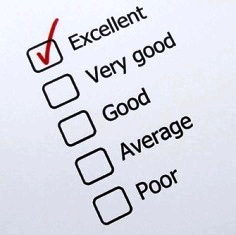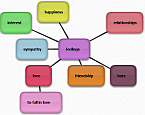
Here in this section we present the most frequently asked questions and their answers about project management. The PM FAQ section is designed to provide both beginning and experienced project managers with answers to critical questions, from the simplest through the most advanced.
We hope our PM questions and answers will be helpful for you in learning the most critical aspects of effective project management. We continuously work on creating new content for the section, so new questions and respective answers are added to the page on a regular basic. Please get back to the PM FAQ section to read the latest updates.
FAQ List
- What Does a Project Manager Do?
- What Skills are Required for a Project Manager?
- What is the Role of a Steering Group (Committee)?
- What is the Role of a Project Leader?
- What is the Role of a Project Reviewer?
- What Main Levels of Authority Do Exist in a Typical Project?
- What is ROI for a Project and How to Calculate It?
- What is a Cost-Benefit Analysis?
- What is the Purpose of Scope Management?
- What are the Key Steps of the Portfolio Management Cycle?
- What are the Key Requirements to Running a Project Portfolio?
- What is Project Scoring and How to Rate Projects Using a Scoring Model?
- What is the Hierarchy of Project Managers in a Project Portfolio?
- How Does a Program Differ From a Project? (Program vs. Project)
- What Does a Program Manager Focus on, As Compared to a Project Manager?
- Is There a Common Process for Managing Programs?
- What are the Key Steps of the Program Management Cycle?
- What is Project Management? How Does It Contribute to Implementing a Change?
What Does a Project Manager Do?
In a typical project, the manager will be assigned to leading the project and take full accountability for reaching the goals and objectives. The project manager is the leader of the project and is responsible for ensuring that the following tasks are completed in a timely manner:
- Gaining approval for the project purpose and terms of reference
- Assembling, governing and motivating the team, in cooperation with team leaders and supervisors
- Ensuring the project is feasible through managing the development of a feasibility study
- Planning the project in detail
- Allocating and monitoring the resources (people, money, time, technology etc.)
- Tracking the project and reporting on the progress to the senior stakeholders (sponsor, customer)
- Making strategic decisions and solving issues
- Controlling the achievement of the goals and objectives
- Reviewing and terminating the project
What Skills are Required for a Project Manager?
Depending on the features, type, size, and nature of a given project, a broad set of skills and abilities and a deal of knowledge and experience are required for a project manager to manage the project successfully. It is convenient to arrange all the required skills and abilities into the following 3 groups:
- Individual Skills. These skills allow a project manager to be as effective as possible when planning and managing work around and within projects. They include good persuasive and self-motivation skills, good skills in oral and written presentation, good analytical skills, decision making, goal setting, high energy, credibility, time management.
- Team Skills. This set of skills provides managers with the ability to assemble, lead, manage and motivate teams and groups of people involved in projects. These skills include communication, group decision making, problem and conflict management, team collaboration, time management, reporting, others.
- Technical Skills. Finally, these skills determine how well a manager can operate equipment and devices as well as use various techniques and methods to drive the project. They include technical knowledge and education, experience in using specific tools and devices, planning complex tasks, managing creative thinking, financial planning, monitoring, contract management, negotiation, others.
What is the Role of a Steering Group (Committee)?
For large-scale and complex projects, there may be a need to establish a Steering Group, especially when there are several project sponsors or champions involved. A Steering Group or Steering Committee provides a valuable channel for resource input and commitment from the sponsors and customers. Project management best practices demonstrate that formation of a Steering Group is beneficial to all project participants because members of the Group generally provide necessary guidance, strategic planning and oversight to the project.
A Steering Committee is assigned to an appropriate role from the very beginning of a project. Although the role does not involve committee members in the management, it provides the members with authority to make project change at strategic level and receive progress reports for review and analysis. The role allows a Steering Group to:
- Be involved in project needs analysis and identification of project goals and objectives
- Provide guidance and support regarding the preparation of the original project management plan
- Advise the management team on any subsequent changes to the agreed goals and objectives (in terms of scope, time-scale or cost) as may be necessary as the project proceeds
The Steering Committee role also covers the duties for approving and implementing any changes which affect scope, time-scale or cost of the project. The members are supposed to provide consulting and guidance regarding the implementation process.
What is the Role of a Project Leader?
A Project Leader is a senior person who is charged with the responsibility of managing the project through leading and coordinating the implementation process. The project leader is likely to be an executive or director who has sufficient authorities and rights to make strategic and tactical decisions on project management. An individual assigned to the project leader role is ultimately responsible for:
- The overall delivery of the project as well as delivery of every phase and stage across the project life-cycle.
- Providing support to and championing the project
- Coordinating the line management of the project manager
- Attending reviewer meetings for reviewing how the project proceeds
- Ensuring that the project is being performed according to the agreed plan
- Ensuring that the personnel committed to the project give sufficient time and effort to the project
What is the Role of a Project Reviewer?
A Project Reviewer is a person or a group of people appointed towards the end of the project planning phase to give assurance to the senior management that the case for proceeding with the project has been properly developed and budgeted to enable successful delivery and acceptance of project products.
The Project Reviewer is supposed to be not affected by or interested in the project. It is just an independent consultant or expert who provide advice on how to proceed with the project in a better way. The role of an independent project reviewer covers the following duties:
- Taking a broad and independent view of project progress
- Receiving necessary information from the project manager prior to the end of each review (milestone) meeting
- Analyzing project data to decide whether sufficient evidence has been presented by the project manager and whether the project can move on to the next phase of the project management plan
- Ensuring that all goals and tasks underpinning the current milestone have been completed
- Revising agreed milestones if needed
- Provide expert judgment regarding resource availability and utilization
It is essential that the project reviewer should not undertake the sponsoring (championing) duties but remain independent on and uninterested in the project. Furthermore, the role should cover areas involved in either direction management or implementation of the project.
What Main Levels of Authority Do Exist in a Typical Project?
In a typical project, there are 4 main authority levels determining what roles and duties an individual involved in a project is expected to perform throughout the project life-cycle. These levels are listed and described below:
- Senior Management. Senior project staff will be responsible for establishing the conditions and culture of the project environment, so that an organization which is the project customer will select and implement appropriate solutions to support its needs and requirements. Senior management authority covers these roles: Sponsor, Project Manager, Program Manager, Customer.
- Middle Management. Middle management personnel will be responsible for ensuring that a project is selected, allocated, steered, completed and terminated satisfactorily. They will take care of making the project approved and ready for change. The roles are: Team Leader, Supervisor,
- Operational staff. This level of authority allows team members to use the tools and techniques defined by the senior management and supervised by the middle management to manage projects effectively. The only role is Team Member.
- Advisory. People and organizations that cannot directly influence a project or authorize a change but that can provide competent advice and recommendations regarding project development and improvement will occupy this level of authority. The roles of the level include: Expert Advice, Facilitator, Observer.
Please note in some projects the management authority levels have another combination of the roles, often with a rather deeper hierarchy of duties and responsibilities. For example, in a construction project the role of project manager is often assigned to Middle Management level.
What is ROI for a Project and How to Calculate It?
In terms of project management, ROI (Return on Investment) is a quantitative measure that tells senior management of a project what amount of financial (funds) and/or non-financial (technology, knowledge, materials) resources they get back from doing the project for what they invest in the project.
Project ROI is calculated and analyzed before the project gets started. It is a mechanism of making decision on whether invest resources in the project initiative. When an investor (sponsor) evaluates a project, he/she calculates ROI to do the following:
- Justify the project
- Rationalize expenditure
- Pursue to take a specific course of action
ROI is an indicator that can be calculated. Here’re the key inputs for making ROI calculations:
- Cost. An amount of money required for maintaining and operating the project
- Benefits. An amount of financial effect the investor gains from the project.
- Annual Cash Flow. A difference between the project cost and financial benefits.
- Non-monetary benefits, including quality, timeliness, quantity etc.
What is a Cost-Benefit Analysis?
In any project environment there is also a set of choices to do the project. There can be multiple choices or alternatives, and the challenge here is to determine which one best fits into the project requirements and goals and leads the project to success. A cost-benefit analysis is the way to examine and estimate available choices and then decide which choice is worthwhile.
A cost-benefit analysis is an attempt to estimate alternatives surrounding a project and determine the impact of every alternative to the project. The analysis regards cost and benefit as the key parameters for estimations. It allows identifying the components of available benefits and costs through creating project appraisals and estimates.
A cost-benefit analysis is used to compare the monetary expectations of a project with the project costs for each solution available. The analysis estimates such parameters as the average cost for project HR, capital costs, labor cost, etc.
What is the Purpose of Scope Management?
The purpose of managing scope of a project is to clearly describe and gain agreement on the logical boundaries of the project. It is managed under the scope management process which aims to determine what’s in and out of the project. Scope statements are used as the primary documents to define what activities and requirements are within the boundaries.
The process of managing scope covers other aspects of project management. The more information about scope is clearly defined and agreed on, the clearer and more vivid a project becomes. Here’re the major aspects of project management being addressed by scope definition:
- Deliverables that are in scope and out of scope
- business requirements and assessment rules
- The major project implementation processes that are within scope
- Types of data required for doing the project in scope
- Organizations that are interested in or affected by the project
What are the Key Requirements to Running a Project Portfolio?
In simple words, a portfolio of projects is a combination of interrelated and dependent projects that are linked to one or several programs to reach the program goals by completing individual project objectives. When an organization considers running a project portfolio, it should meet the following key requirements:
- Commitment and Acceptance. Senior management of the organization needs to commit to the effectiveness of using project management and to ensure acceptance of the portfolio by personnel.
- Trained Staff. In the organization there should be people who have been trained adequately in following the principles and practices of successful project portfolio management.
- Information Systems. Senior management should provide systems and tools required for exchanging information and document flows between people involved in the projects.
- Methodological Foundation. There should be a methodology to effectively plan and manage the projects, by creating a PM office and assembling multiple teams.
- Organizational Structure. Senior management should build an organizational structure consisting of individuals, teams, departments and divisions to establish and support the duties, responsibilities and roles of the personnel involved in the portfolio.
What is Project Scoring and How to Rate Projects Using a Scoring Model?
The term “project scoring” is mainly used in project portfolio management to define a set of criteria to select and prioritize projects and programs that belong to a single portfolio. It is a structure process that aims to evaluate the projects and programs against some criteria to determine the execution order and relevance.
The project scoring process can be performed under a range of methods and techniques that define how to score projects and what rating to use. Essentially, scoring means evaluating projects against a set of criteria to define rating per project and create weighted score value for all the projects available for the evaluation. The process allows prioritizing parallel and ongoing projects and programs within the same portfolio.
It is the matter of the PMO to decide what model of rating and scoring to apply to their particular portfolio and projects. Below we suggest some basic criteria to rate and weight portfolio projects:
- Belonging: can you say the scope of your project lets decide that the project belongs to your organization and is inside of the current operational environment? As much the project belongs to the organization as much benefit it potentially provides.
- Relevance: What is the amount of impact does your project or program cause towards the operational environment? Can you say the project is relevant? Relevance defines the project’s ability to deliver the most fitting change to the environment.
- Cost saving: does the project or program provide operational savings? Is there any evidence that the project contributes to cost reduction?
- Marketability: Can your solution be used in other organizational units? Does the project offer some market-focused opportunities that allow an organizational unit to succeed in the market?
- Profitability: What impact does the solution have to the organization’s profit margin? Can you confirm that by doing the project you increase the profits?
What are the Key Steps of the Portfolio Management Cycle?
Project Portfolio Management (the acronym PPM) is the effort to coordinate and lead the tracking and control of a portfolio’s components to ensure that effective decision making is available to the entire portfolio as well as to every single component, while supporting successful achievement of specific organizational objectives. The components are projects, programs, other types of collaborative work.
In order for the senior management team to manage their project portfolio, they need to perform a range of steps that define the lifecycle of the PMM process. Here’re 9 key steps:
- Identify and define strategic business goals that explain what the organization wishes to reach
- Select right projects and programs that support and contribute to the achievement of the goals
- Prioritize the work (projects and programs) and assigned it to the portfolio
- Start managing projects and programs
- Review and control performance
- Complete portfolio status and terminate or re-prioritize all projects and programs that are failed/completed
- Continue performing remaining projects and programs
- Deliver all the work successfully
- Perform the activity of lessons learned and close the portfolio.
What is the Hierarchy of Project Managers in a Project Portfolio?
It is the ranking of duties, responsibilities and obligations of managers involved in managing a portfolio of projects in the highest authority level. It determines three roles of project managers and their subordination level as to each other. Here’re the project manager roles in the hierarchy:
- Program Manager (also known as Change Manager). This person gains the Senior Management authority level to control and oversee the state, direction, and progress of the portfolio. It is a strategic role to ensure that the portfolio delivers the business benefits expected. The Program Manager gets reports from and governs the Project Manager and Project Leader.
- Project Manager. It is the most popular role. A person assigned to this role is supposed to have a broad experience and good skills in project planning and implementation. The Project Manager may manage two or more projects of the portfolio at once and have the Project Leaders as directly reporting personnel
- Project Leader. This role lets a leader to manage a stage or phase of a portfolio project or a small project in the portfolio. It is similar to the role of team leader but the difference is that the project leader has the right to govern the project along with human resources while the team leader is allowed to make team-based decisions only.
How Does a Program Differ From a Project? (Program vs. Project)
There are a number of differences between programm and projects. Unfortunately, many organizations when managing their strategic planning process regard programs as large and complex projects. That’s the biggest mistake.
Programs significantly differ from projects. The main difference is that a program aims to identify and understand stakeholder needs and expectations in order to reduce ambiguity through negotiations, while a project appears to achieve clear, certain and well-defined objectives using the least possible resources. In other words, program management addresses the problem of reducing “ambiguity“, while project management resolves the issue of reducing “uncertainty“.
As processes, program management and project management differ from each other because the former focuses on creating interfaces between projects whereas the latter aims to deliver a specific outcome.
Here’re the details of the comparison “program vs. project”
A project has:
- Fixed duration
- Preset objectives
- Focus on tasks
- Process-based life-cycle
- Project manager as an overseer
- Single deliverable
A program has:
- Undefined duration
- Floating objectives
- Focus on goals
- Product-based life-cycle
- Program manager as a creative decision maker
- Multiple interrelated deliverables
What Does a Program Manager Focus on, As Compared to a Project Manager?
The competencies of a program manager are different from those of a project manager. A program manager has a mindset that is different from the one of a project manager. Therefore, both roles have different focuses. Here’re the differences:
A program manager focuses on:
- Applying specific and unique performance-based skills
- Defining stakeholder requirements and expectations
- Using a threat-based risk approach for managing risks
- Resistant to changes with adverse effects on program goals
- Using a visible and decisive management style
A project manager focuses on:
- Applying typical performance-based skills and approaches
- Identifying emerging needs and expectations from stakeholders
- Using a value-based risk approach for managing risks
- Increasing organizational effectiveness
- Using political and negotiation-based management style
Is There a Common Process for Managing Programs?
Yes, there is a single common process of managing programs and project portfolios. The process appears to be effective in most PM methodologies. Here’re the key steps of the process:
- Linking. Once projects are identified and planned out they are linked to a master program, which is performed and controlled under the authority of a project management office.
- Set Prioritization. Projects within a program are prioritized, so that allocation of scarce resources can be done according to priority. There is clarity for project staff about the best use of the available resources to do the projects.
- Create Dependencies. The projects and their tasks are linked to and connected with each other, so that the dependencies make it possible for personnel to get a big picture view of the whole program.
- Track Deadlines. Project delaines are identified, tracked and managed in response to the program management plans and in relation to dependent or associated projects.
- Manage Changes. There is a change management process that identifies and terminates any projects that seem to irrelevant to the organizational strategy due to changes occurred.
- Avoid Overlaps. Any projects that appear to be overlapping with each other or duplicating each other are revealed and terminated.
What are the Key Steps of the Program Management Cycle?
Program management can be regarded as a process that consists of the following steps:
- Formulation. This step aims for determining reasons for starting a program, seeking alternatives, evaluating options, and making a choice.
- Planning. The planning step defines a strategy for program management and identifies the bets possible options and approaches for implementing the program.
- Implementation. It is intended to execute the program in line with the strategy and using the approaches. Support of related projects operational activities is provided.
- Appraisal. This step involves assessment of benefits achieved through the implementation, review of program purpose and capability, and redeploying the program, if required.
The purpose of these steps is to develop a program in a stable and predictable environment. Each of the steps breaks down into a range of activities specific to a particular program and associated projects.
What is Project Management? How Does It Contribute to Implementing a Change?
Essentially, Project Management (PM) is a discipline of implementing a change effectively and efficiently through continuously planning, development, implementation, monitoring and control of projects in order to bring significant benefits to an organization or/and an individual through the change.
PM is a methodology of managing initiatives and efforts to produce a desired outcome (product or service) according to requirements specified. When an organization uses PM, it can make a beneficial change by:
- Ensuring that finite resources (human, time, funds, technology, knowledge etc.) are utilized on the right projects
- Combining the energy of personnel in implementing the change
- Managing related changes in an organized way
- Assessing and mitigating risks sounding success of the change
- Defining goals and key success areas
- Establishing quality objectives
PM discipline makes it possible to do a change by using a methodological path of implementation. It allows using a management approach to regard the act of making a change as a process of managing a project that can be presented as a series of phases such as:
- Planning
- Start
- Execution
- Control
- Closure
Having such a model of the project implementation process an organization gets a powerful tool to make a change. An organization can do the following:
- Define a project aimed to make a beneficial change
- Transform the change into a need to be addressed by the project
- Organize the project into a set of manageable stages, tasks and activities
- Obtain appropriate and necessary resources, including people, technology, funds, others.
- Assemble and manage a team to perform the work
- Make a plan of how to do the work using finite resources
- Monitor and control progress
- Report progress to senior management and stakeholders
- Terminate the project when its goals are accomplished
- Review the results achieved to identify whether the project has addressed the need.
- Review lessons learned











